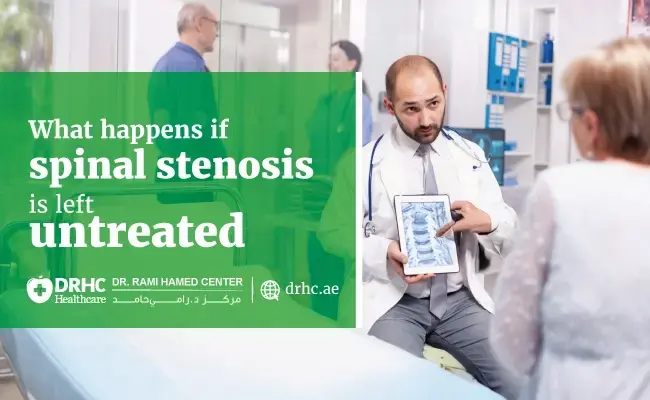
For many runners and cyclists in Dubai, staying active is not just a lifestyle—it's a passion. But when sharp, nagging pain develops on the outside of the knee, it can stop even the most dedicated athletes in their tracks. One of the most frequent causes of this type of pain is Iliotibial Band Syndrome (ITBS)—a condition that's common, frustrating, and thankfully, very treatable.
At the Dr. Rami Hamed Center (DRHC), we understand how concerning this kind of pain can be, especially when it interferes with your training, daily mobility, or competitive goals. In this blog, we’ll walk you through what IT Band Syndrome is, why it affects runners and cyclists, and what you can do to recover safely—and prevent it from coming back.
What Is IT Band Syndrome?
The iliotibial (IT) band is a long, thick band of tissue that runs along the outside of your thigh, connecting your hip to the top of your shinbone. Its job is to help stabilize the knee during movement.
When the IT band becomes too tight or overused, it can start to rub against the outer part of the knee joint, especially during repetitive bending and straightening (like running or pedaling). This friction leads to pain, irritation, and inflammation—commonly known as IT Band Syndrome.
Why Runners and Cyclists?
Running and cycling both involve repetitive, low-impact motion. Over time, this can put stress on the IT band—especially when:
- You increase mileage or intensity too quickly
- There are muscle imbalances (particularly in the hips or glutes)
- You train on uneven surfaces or use improper technique
- You lack adequate stretching and strength training
- Your bike fit or footwear is not properly aligned
At DRHC Dubai, our sports medicine team often sees athletes with ITBS following a training spike or change in activity without adequate recovery or body mechanics assessment.
Symptoms: What Does IT Band Syndrome Feel Like?
If you’re dealing with IT Band Syndrome, you may notice:
- Sharp or burning pain on the outside of the knee
- Pain that worsens during or after running or cycling
- Discomfort when going downhill or downstairs
- A feeling of tightness along the outer thigh
- Swelling or tenderness near the knee in some cases
Pain usually starts after a certain distance or duration and may improve with rest—only to return when the activity resumes.
Diagnosis: Getting the Right Answer
At DRHC Dubai, diagnosis begins with a careful look at your symptoms, training history, and a thorough physical exam. In some cases, imaging such as MRI or ultrasound may be used to rule out other causes of knee pain, like meniscus injury or bursitis.
We also assess your posture, gait, strength, and flexibility—because identifying the underlying causes is key to successful treatment.
Treatment: The Good News
IT Band Syndrome can be frustrating, but the vast majority of patients recover without surgery. The focus is on reducing inflammation, improving mobility, and correcting movement patterns. Here's what treatment may include:
- Rest and Activity Modification:
Temporarily reducing or stopping the aggravating activity is essential. This doesn't mean quitting movement altogether—we’ll help you stay active safely. - Physical Therapy:
Our physiotherapists at DRHC guide you through exercises that stretch the IT band and strengthen your hips, glutes, and core to reduce strain on the knee. - Manual Therapy & Foam Rolling:
Hands-on techniques and foam rolling target tight areas and improve muscle flexibility. - Ice and Anti-inflammatory Medications:
These help ease pain and swelling, especially in the early stages. - Injection Therapy (When Needed):
In some cases, corticosteroid injections may be used to calm stubborn inflammation—always under the care of our expert team. - Biomechanical Correction:
We may recommend changes in running form, footwear, or bike setup to prevent recurrence.
Our Related Blogs:
- Is Jumper's Knee a Career-Ending Injury? What You Need to Know?
- How is Jumper's Knee Treated? Conservative to Surgical Options
- When Does Jumper's Knee Require Arthroscopic Surgery?
- Understanding Arthroscopic Surgery for Jumper's Knee: A Step-by-Step Guide
- What Happens During Arthroscopic Patellar Tendon Debridement?
- Why Choose Dr. Rami Hamed for Arthroscopic Knee Surgery in Dubai?
- What is Iliotibial Band Syndrome (ITBS)?-Causes and Symptoms
- Why Does the Outside of My Knee Hurt? Understanding IT Band Friction Syndrome.
Frequently Asked Questions (FAQs)
How painful is IT Band Syndrome?
Pain can range from mild to quite sharp and localized on the outside of the knee. It often builds up with repetitive movement and can be severe enough to stop you mid-run or ride.
How long does it take to recover?
With early intervention and consistent therapy, many athletes improve within 4 to 8 weeks. However, complete recovery may take longer if the condition is chronic or if aggravating activities are not modified.
Is surgery ever necessary?
Very rarely. Surgery is reserved for persistent, severe cases that do not respond to conservative treatments. At DRHC Dubai, our goal is always to treat non-surgically whenever possible.
Can I continue to run or cycle during treatment?
This depends on the severity of your symptoms. Some may need to pause these activities temporarily, while others can modify their training. We’ll help create a tailored plan to keep you moving without worsening the condition.
Will it come back?
IT Band Syndrome can return if underlying issues like poor form or muscle imbalances are not corrected. That's why long-term prevention strategies are part of every recovery plan at DRHC.
Prevention: Keeping ITBS Away
Once you've recovered, prevention is key. Here’s what we recommend:
- Warm up and stretch before and after exercise
- Incorporate hip and core strengthening into your routine
- Avoid sudden jumps in mileage or intensity
- Replace running shoes regularly
- Ensure proper bike fitting and riding posture
- Cross-train to avoid repetitive strain
Our sports physiotherapy team can guide you with personalized prevention plans and movement assessments.
When to See a Specialist
If you're experiencing outer knee pain that doesn’t improve with rest—or if it's interfering with your ability to run, cycle, or stay active—it’s time to seek professional help.
At Dr. Rami Hamed Center (DRHC) in Dubai, our multidisciplinary team of orthopedic specialists, sports medicine experts, and physiotherapists work together to deliver targeted, compassionate care for conditions like IT Band Syndrome.
Conclusion: A Treatable Condition with the Right Support
IT Band Syndrome may be common, but it's not something you have to live with. With early diagnosis and expert care, most runners and cyclists can return to doing what they love—stronger and smarter than before.
If you’re dealing with knee pain or suspect ITBS, don’t wait. Schedule a consultation at DRHC Dubai, where we offer advanced treatment options in a supportive, day care setting—so you can get back to your sport, your routine, and your life.
Dr. Rami Hamed
Consultant Spine & Orthopedic Surgeon
Founder, DRHC – Dubai Healthcare City
📞 +971 4 279 8800
🌐 www.drhc.ae
📍 Dubai Healthcare City, Building 52
Topic: orthopedic Knee




.jpg)




Leave a comment